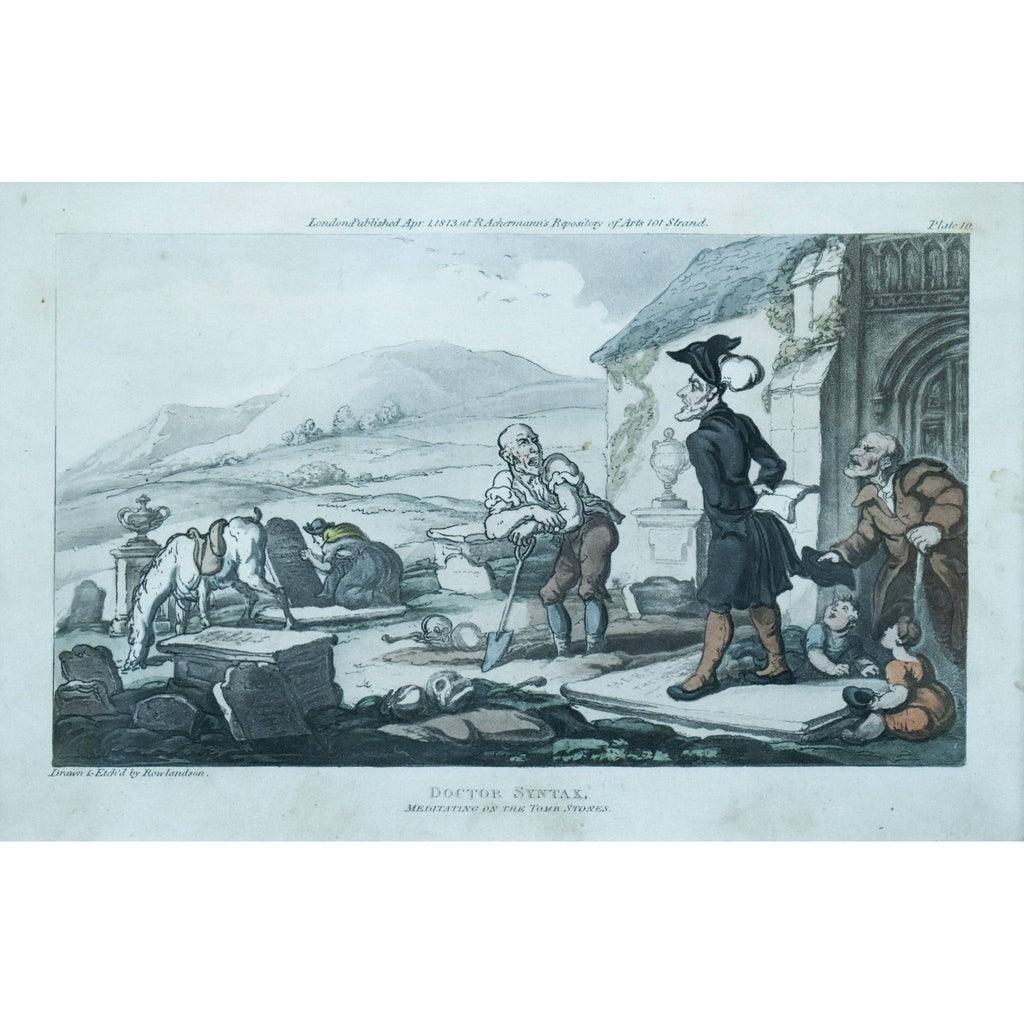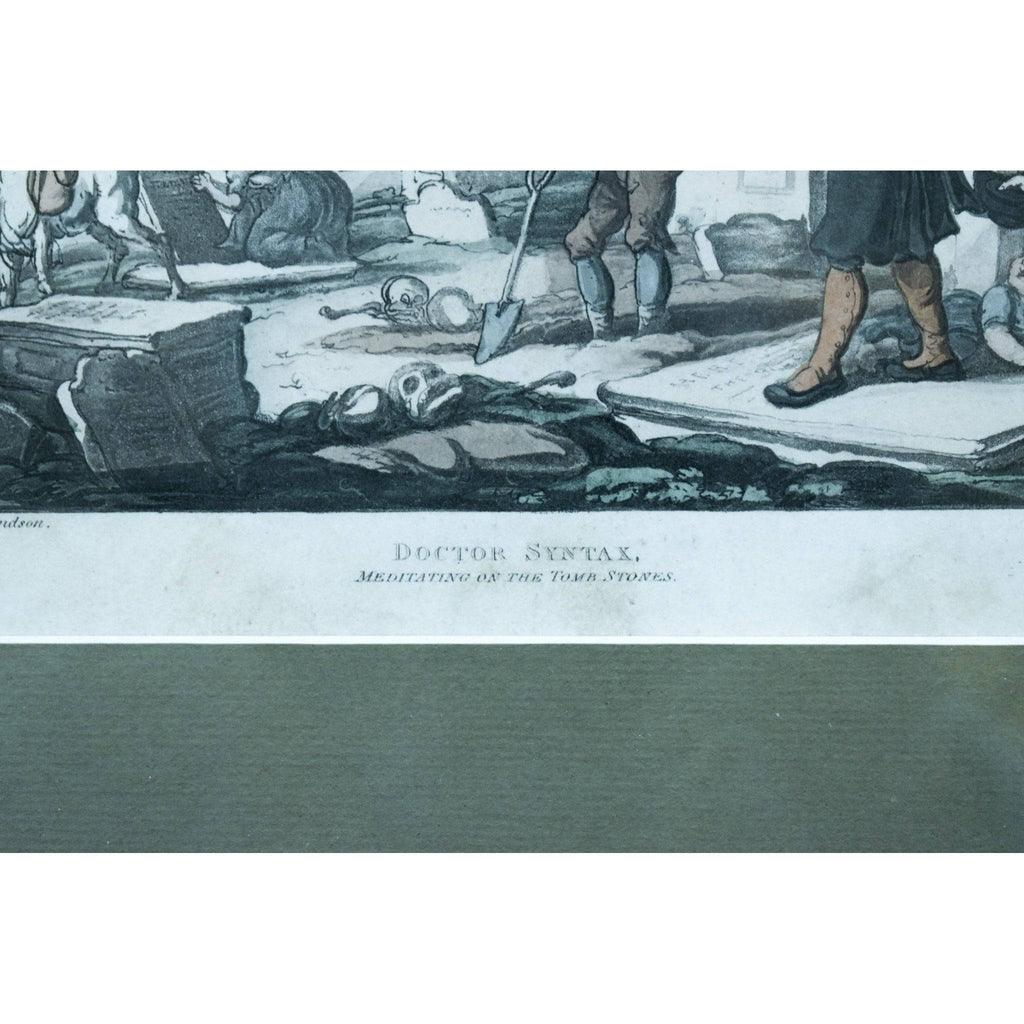Thomas Rowlandson - Doctor Syntax Meditating On The Tomb Stones
Thomas Rowlandson - Doctor Syntax Meditating On The Tomb Stones
Couldn't load pickup availability
Share
Amusing early edition aquatint drawn and etched by Thomas Rowlandson entitled " Doctor Syntax Meditating on the Tomb Stones". It was published in "The Tour of Dr. Syntax in Search of the Picturesque", (London 1812, pl.10), a story of a fictional rural schoolteacher and pastor who attempts to make his fortune by going travelling, and then writing and illustrating a book about his experiences of quaint and unusual places. The story was first told and published in verse and serial form in 1809, in Rudolph Ackermann's The Poetical magazine under the title "The Schoolmaster's Tour". The series was written by William Combe (1742-1823), a prolific English writer of miscellaneous prose and satirical verse, and illustrated with colour plates by Thomas Rowlandson. Combe wrote the text to elucidate the illustrations. The work was then collected in 1812 as a "by popular demand" book and was reprinted a number of times during the following decades. This collaboration of designer, author and publisher went on to produce a further two "Tours": The Second Tour of Dr Syntax in Search of Consolation (1820), and The Third Tour of Dr Syntax in Search of a Wife (1821).
This print was likely produced for the book’s second edition, and is dated 1 April, 1813.
It was said that the amount of copper Thomas Rowlandson etched would sheathe the British Navy. An inveterate gambler, for much of his life Rowlandson had to produce a flood of his comic prints to stay ahead of financial losses. A wealthy uncle and aunt raised Rowlandson after his textile-merchant father went bankrupt. His career developed quickly. He entered London's Royal Academy Schools in 1772, visited Paris in 1774, exhibited at the Royal Academy in 1775, and won a silver medal in 1777. He left school in 1778 to set up in business. Rowlandson's depictions of life in Georgian England exposed human foibles and vanity with sympathy and rollicking humour. During the 1780s he consolidated the delicate style he used for his coarse subjects. He worked mainly in ink and watercolour, his rhythmic compositions, flowing line, and relaxed elegance inspired by French Rococo art. In 1789, at the height of critical and popular success, Rowlandson's aunt died, leaving him a large sum. He ran through the money quickly, travelling across Europe and gambling: by 1793 he was impoverished. His fortunes changed in 1797, when he began working for fine-art publisher Rudolph Ackermann, who published most of Rowlandson's finest work for twenty years.
Sources: The J. Paul Getty Museum; Royal Academy.
Artist/Etcher: Thomas Rowlandson (1757-1827)
Medium: Hand-coloured etching with aquatint.
Condition: Good condition.
Dimensions: 14 x 21.5 cm. / 5 ½ x 8 ½ in. (sheet).
Frame: 28 x 34.5 cm. / 11 x 13 ½ in. Silver wood, contemporary. Olive green-coloured acid free matting and glass.
Origin: United Kingdom.



















